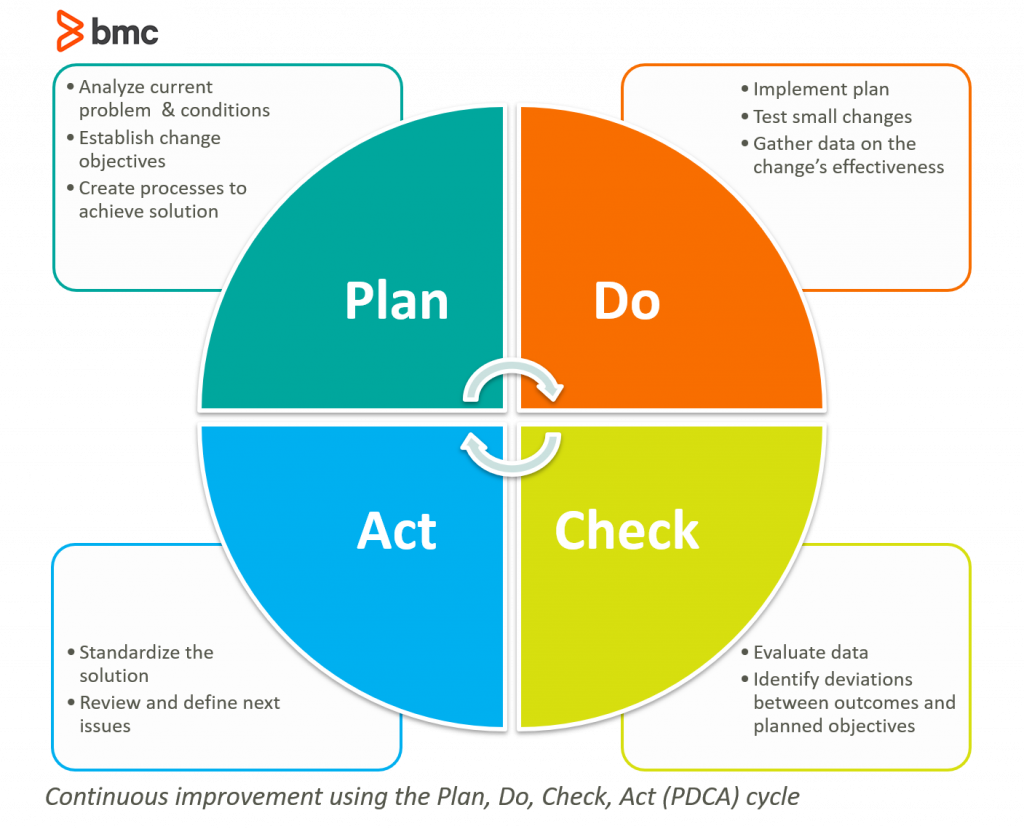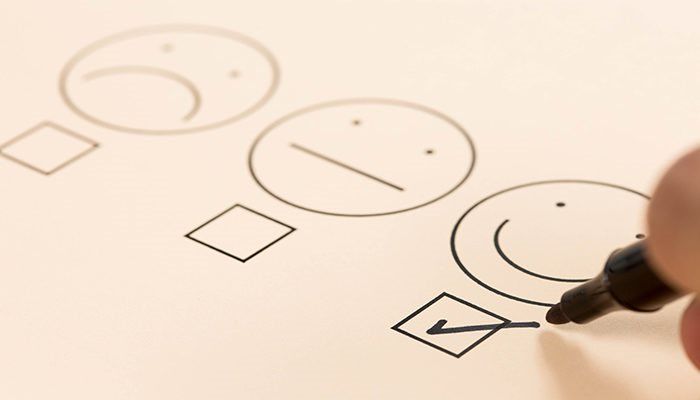Although not part of the ITIL® framework, Kaizen can enable continuous improvement in IT service delivery. Started in the early 20th century by Sakichi Toyoda, Kaizen attempts to create a culture of continuous improvement in an organization. Let’s look at Kaizen and how it can be used in an ITIL and ITSM environment.
Continuous improvement in ITSM, ITIL, and Kaizen
IT service management (ITSM) refers to all activities surrounding the planning, deployment, management, improvement, and retirement of IT service delivery. ITIL provides a set of best practices and a framework for implementing an ITSM environment.
The two recent ITIL versions, ITIL v3 and ITIL v4, define improvement as a core area for ITSM. The Continual Process Improvement (CPI) core area of the ITIL v3 service lifecycle and the Improve step of the ITIL v4 Service Value Chain both define continual improvement of products, services, and practices as a key component of ITIL and ITSM.
The goals of continual improvement are to:
- Perform service review on existing processes
- Evaluate all processes and procedures that deliver a service
- Define new initiatives to improve services
- Monitor prior improvements
- Introduce corrective actions, as needed
It’s here—in the improvement function—that Kaizen can contribute most to ITSM and ITIL.
What is Kaizen?
Borrowing from a Japanese word for “improvement”, Kaizen is a philosophy that gave rise to a methodology for continuous improvement. Kaizen is designed to create a culture of continuous improvement in an organization and that culture can be extended to the IT function. Implementing Kaizen successfully offers a variety of benefits:
- Improving existing processes
- Gaining efficiencies
- Reducing setup times
- Removing waste
- Enabling a quicker time to market
Kaizen is perhaps most recognized for its success in manufacturing environments, for instance, The Toyota Way. Kaizen is often associated with Lean and Six Sigma environment. But the Kaizen principles can just as easily be applied to IT management: your company can harness Kaizen to better enable and improve IT service delivery.
Kaizen and Kaizen events fit perfectly into the ITIL v3 framework and the ITIL v4 Improve area by giving you a sub-framework, philosophy, and methodology for performing continuous service improvement, particularly in the areas of problem management, event management, and incident management.
At its core, improvement is about change. Kaizen deals with continuous improvement as opposed to breakthrough change.
Breakthrough change vs continuous improvement
Understanding the differences between breakthrough change and incremental, continuous improvement is the key to Kaizen.
A breakthrough change is a one-time event, a major project involving a complete retooling of a system, performed over a longer timeline with a large budget and more resources.
- Example in IT: Replacing your existing ERP system with SAP
- How to: Breakthrough changes are accomplished using management approval, project plans, budgets, and dedicated resources.
Continuous improvement, on the other hand, is a series of minor changes that improve a process.
- Example in IT: Incrementally improving the IT user provisioning process to increase the speed by which users receive devices and network access
- How to: Continuous improvement using Kaizen is implemented by pinpointing a problem, and using tools such as Plan-Do-Check-Act (PDCA) cycles and Kaizen events to create process improvement.

Continuous improvement using Kaizen methods isn’t a quick process. It relies on several small changes over time that supplement and rival breakthrough changes. In a breakthrough change, the planning and approval processes take a lot of time, but once the change is switched on, its effect is enormous. Companies including Ford, Lockheed Martin, and Pixar have shared their successes with Kaizen.
How Kaizen events work: Kaizen event components
Continuous process improvement through Kaizen usually organizes itself around a Kaizen event. A Kaizen event is a short-term improvement project centered around a specific area. For this article, we’ll use the example of improving the IT user provisioning process to decrease mistakes in creating new network users and deploying equipment.
Although you may be tackling a specific problem (user provisioning issues, in this case), a Kaizen event should be considered part of your continuous improvement program.
Even though you’re working on a minor change over a short amount of time, the Kaizen event must be organized with several defined elements. Here is a simplified view of a Kaizen event, including what elements you’ll need:
- A clear definition of the purpose of the event.
- An understanding and acceptance for using Kaizen techniques in your organization.
- A Kaizen facilitator experienced in Kaizen techniques, Kaizen philosophies, and the problem area, who will lead the team
- For example, the IT user provisioning the Kaizen event could feature the Service Desk supervisor as its facilitator.
- Team members, who should mostly be from the area where the event is being conducted, as well as other interested and expert personnel involved in the area.
- The IT user provisioning Kaizen members could be from the Service Desk, as well as representatives from other areas, such as HR and PC deployment.
- Management support of the event to ensure that results are taken seriously and implemented.
- Pre-event planning, including how you’ll:
- Obtain and analyze data around the problem and its possible solutions
- Obtain any necessary materials that will be needed
- Run the event
- Present the results to management for approval
- The event itself, where the problem will be analyzed, evaluated, and possible solutions will be reviewed and recommended.
- Presentation to management for approval and implementation
- Implementing the solution, monitoring, and adjusting
- Looking for the next improvement area you can create a continuous improvement for other IT functions.
Kaizen for better ITSM
Improving ITSM requires continuous change, not a single breakthrough change—that’s why ITIL frameworks and Improve areas encourage this culture. As a methodology that supports your continuous improvement environment, Kaizen is a smart addition to your ITSM and ITIL toolbox.
Additional resources
For more information on continuous improvement and change enablement, browse our ITIL v3 Guide and our ITIL 4 Guide, both with 20+ related articles to IT service management. Ready for the only end-to-end ITSM and ITOM platform for your company? Explore BMC Helix.







